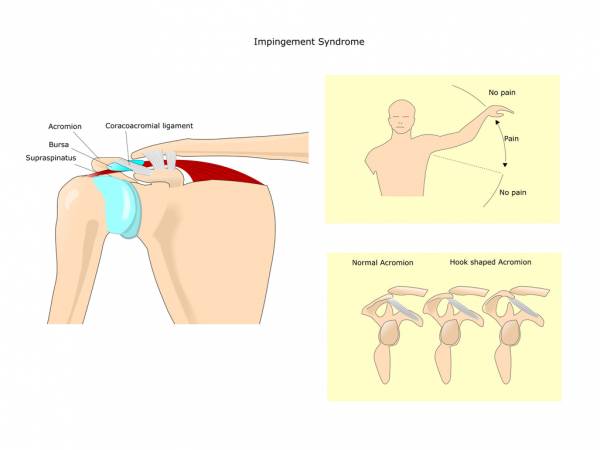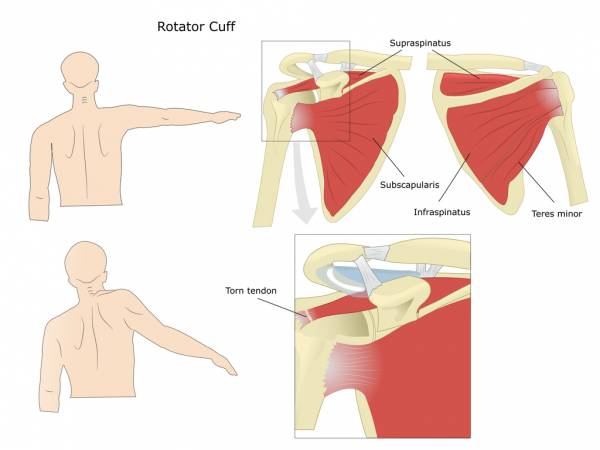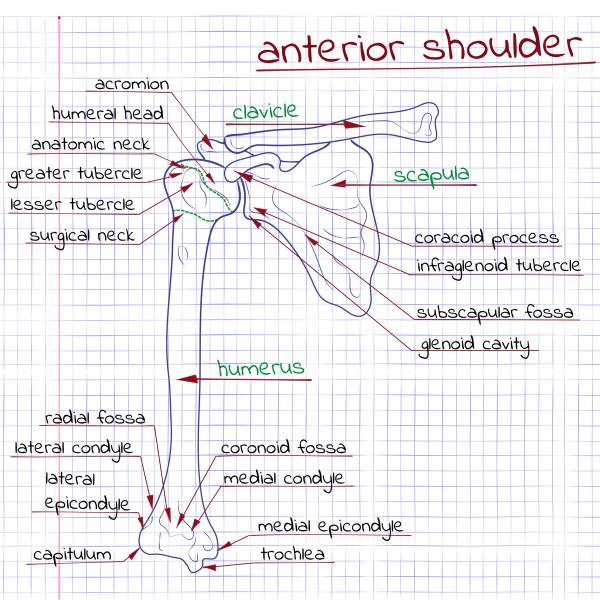The shoulder joint is one of the most vulnerable joints in the human body. There is so much range of movement that it is surprising more shoulder injuries don’t occur.
The shoulder joint is one of the most vulnerable joints in the human body. There is so much range of movement that it is surprising more shoulder injuries don’t occur.
If your shoulders are healthy, you must be doing the right things to strengthen them. If not, you are either performing compromising movements or are negligent on your strengthening protocols.
If you are experiencing shoulder pain during your training or competitions, it’s time to step back and determine the root cause. What follows are simple hands-on tests that can determine why your shoulders are in pain. A partner is recommended to assist with each test.
Impingement
- While seated, have a partner raise the arm of your sore shoulder to the front and overhead as far as possible.
- Your partner should use one hand on your arm and the other hand supporting your shoulder blade (scapula).
The space where your rotator cuff tendons and shoulder bursa reside (the sub-acromial space) becomes smaller when your arm is raised overhead and pushed to the limit. If pain is felt in your shoulder, the test is considered positive. The pain is likely caused by impingement of the tendons or bursa in that area of your shoulder.

Biceps Tendonitis Test
- While seated, raise your painful arm (shoulder) forward to the front.
- While holding your arm out straight in front of you, turn your palm up (e.g., forearm supinated).
- You partner should then push your arm down, while you attempt to resist.
“There are multiple articulations (movements) at the shoulders, making it a challenge to directly pinpoint an injury. But proper assessment and movement tests to determine specific pain can narrow it down to specific injury issues.”
Pain felt in the front of your shoulder while resisting your partner’s arm push means biceps tendonitis is the probable cause of your shoulder pain.
Labrum Tear
The Labrum tear test has two parts: the apprehension and relocation tests.
The Apprehension Test:
- Begin by lying on your back on a flat, elevated surface (e.g., a bench or table).
- Move your arm out to the side perpendicular to the torso.
- Flex your elbow to a ninety-degree angle.
- Your partner should slowly rotate your arm so your hand moves toward your ear with the partner pushing as far as possible. Maintain the ninetydegree elbow flexion.
If you are apprehensive (hesitant) about shoulder movement beyond the joint, this test is considered positive for a possible labrum tear.
The Relocation Test:
You may feel your shoulder is unstable and potentially wants to move out of place – or relocate – especially when your shoulder is in extreme external rotation. If this is the case, have your partner gently press on the front of your shoulder to relocate the joint.
If you feel less relocation and your shoulder feels more stable, believe it or not this test is considered positive and a torn labrum is the probable cause.
AC Joint Separation
The test for an AC (acromial-clavicular) joint separation is called the AC joint compression test. The shoulder blade (scapula) connects to the collarbone (clavicle) at this joint.
- While seated, have your partner place one hand at the front of your shoulder joint and one hand at the rear.
- The partner should slowly, but firmly press on both sides of your shoulder to compress the AC joint.
“The aforementioned tests are simple protocol anyone can use to determine the possible cause of shoulder joint injuries.”
If there is a joint separation, pain will be felt at the joint between the downward pressing hands. In addition, pain while raising the arm upward and while sleeping are also indications of an AC joint separation.
Rotator Cuff Tear
- While seated, have your partner raise the painful arm/shoulder to the side and parallel to the floor.
- While you relax the arm, the partner lets your arm drop.
If your arm drops involuntarily and you are unable to maintain that parallel position you may have a rotator cuff tear. Some may compensate for a torn rotator cuff by elevating the scapula toward the ear. Be vigilant of this when performing the rotator cuff tear test.

Supraspinatus Tear
The empty glass test is used to assess the status of the supraspinatus, one of the four rotator cuff muscles. The supraspinatus is located on the upper part of the shoulder joint and is involved in abduction (arm raising).
- While seated or standing, lift the sore arm forward and to the side about thirty to 45 degrees.
- Pronate your wrist so the palm of your hand faces down to the floor (as if you were trying to empty a glass of water).
- In this position your partner should gently push your arm down.
If pain or weakness prevents you from maintaining your arm position, you may have a supraspinatus tear.
Frozen Shoulder
A frozen shoulder is also known as adhesive capsulitis. It occurs slowly over time and can limit functional use of your arm. A frozen shoulder manifests in pain and tightness. This makes it difficult to reach overhead, press a dumbbell, or scratch your back.
“It is imperative to strengthen all participating muscles and shoulder articulations to enhance shoulder joint health due to the vulnerability of the body part.”
There is no special way of diagnosing a frozen shoulder, nor is there a diagnostic test to verify it (e.g., an X-ray or MRI). A frozen shoulder diagnosis is made by observing the specific shoulder moving through a range of motion.
Frozen Shoulder Procedure:
- Stand in front of a mirror. A partner should observe you while moving the arm and shoulder. The partner should be noting the range and quality of motion of the shoulder joint.
- Slowly raise both arms to the front and overhead. If you suffer from frozen shoulder, your painful arm may only come up to a point just past parallel with the floor. Additionally, as your scapula elevates towards your ear, you will feel general pain in the shoulder.
- From this position, slowly lower the arm down, and then slowly lift the arm out to the side. Note the range of motion that occurs. If the arm only goes up to a point parallel to the ground – and it’s painful – then you likely suffer from frozen shoulder syndrome.
A final test for frozen shoulder is to stand with both arms at the sides and the elbows flexed at ninety degrees. Externally rotate the arms outward. If the frozen shoulder syndrome is present, the painful arm will not rotate outward in comparison to the healthy shoulder.

Assessing Your Shoulder Health
Shoulder joint injuries can be head-scratchers. There are multiple articulations (movements) at the shoulders, making it a challenge to directly pinpoint an injury. But proper assessment and movement tests to determine specific pain can narrow it down to specific injury issues.
The aforementioned tests are simple protocol anyone can use to determine the possible cause of shoulder joint injuries. You may discover one specific issue (e.g., only a rotator cuff tear) or multiple issues (e.g., biceps tendonitis and impingement).
Either way, multi-dimensional shoulder joint articulations can be problematic. It is imperative to strengthen all participating muscles and shoulder articulations to enhance shoulder joint health due to the vulnerability of the body part.
You might also like The Best Method For Talking To Your Doctor About Shoulder Injury and this list of articles how to prevent and treat shoulder injuries.






